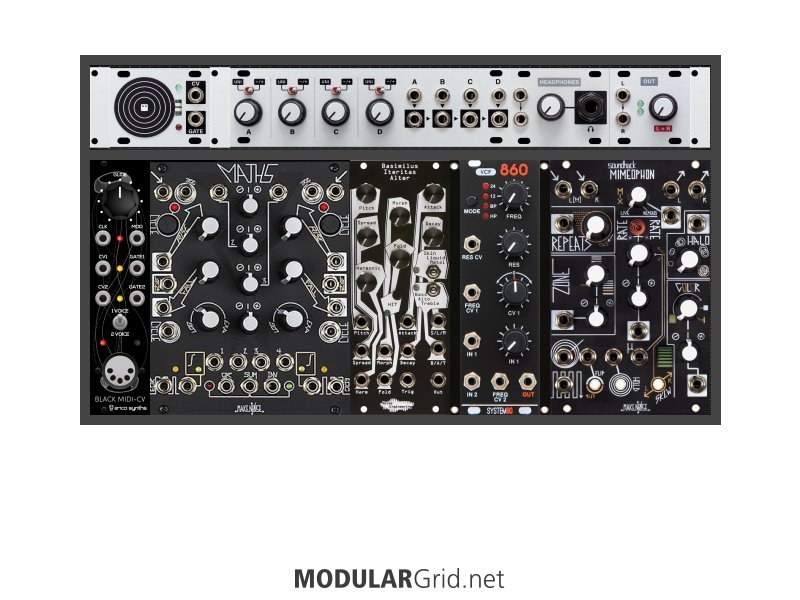I agree with garfield get a bigger case - 6u / 104hp is a great starter size (and mantis is one of the best $/hp in eurorack)
I think I'd want a better mic input - Little Mikey is the only one I know of - but it will be a better bet than microphonie - at least you get the choice as to how bad it is depending on mic, placement etc as opposed to being forced down a particular route - plus phantom power should you need it
Another option would be Ears - which is an updated microphonie - which adds an envelope follower, which is quite useful
or a doepfer A119, this will take a dynamic mic, and it probably will distort, but it does have an envelope follower and a gate extractor
If I went for Little Mikey, I'd want to add an envelope follower (disting has one and a pitch follower)
Your output from clouds for example to a mixer will definitely work
With an original clouds (and a lot of clones) you will want attenuators for cv inputs
If it was me trying to do this I would go for the Little Mikey, Disting mk4 (envelope follower), Maths (or Rampage, I prefer Maths - google illustrated manual), MI Kinks and possibly a used Phonogene or a supercell, and add a filter - ripples is nice - I'd also want to look at sampler modules and how to trigger them whilst playing the piano - create a loop, process it and then re route the piano in so that you can process that differently (in the future perhaps)
And leave the rest of the case empty - it will fill up at some point in the future, probably just before it's time to buy another one!!!
ie get a few things that will allow you to do what you want to do - process your piano - and then slowly and organically grow from there, instead of planning all sorts of stuff
"some of the best base-level info to remember can be found in Jim's sigfile" @Lugia
Utility modules are the dull polish that makes the shiny modules actually shine!!!
sound sources < sound modifiers < modulation sources < utilities


